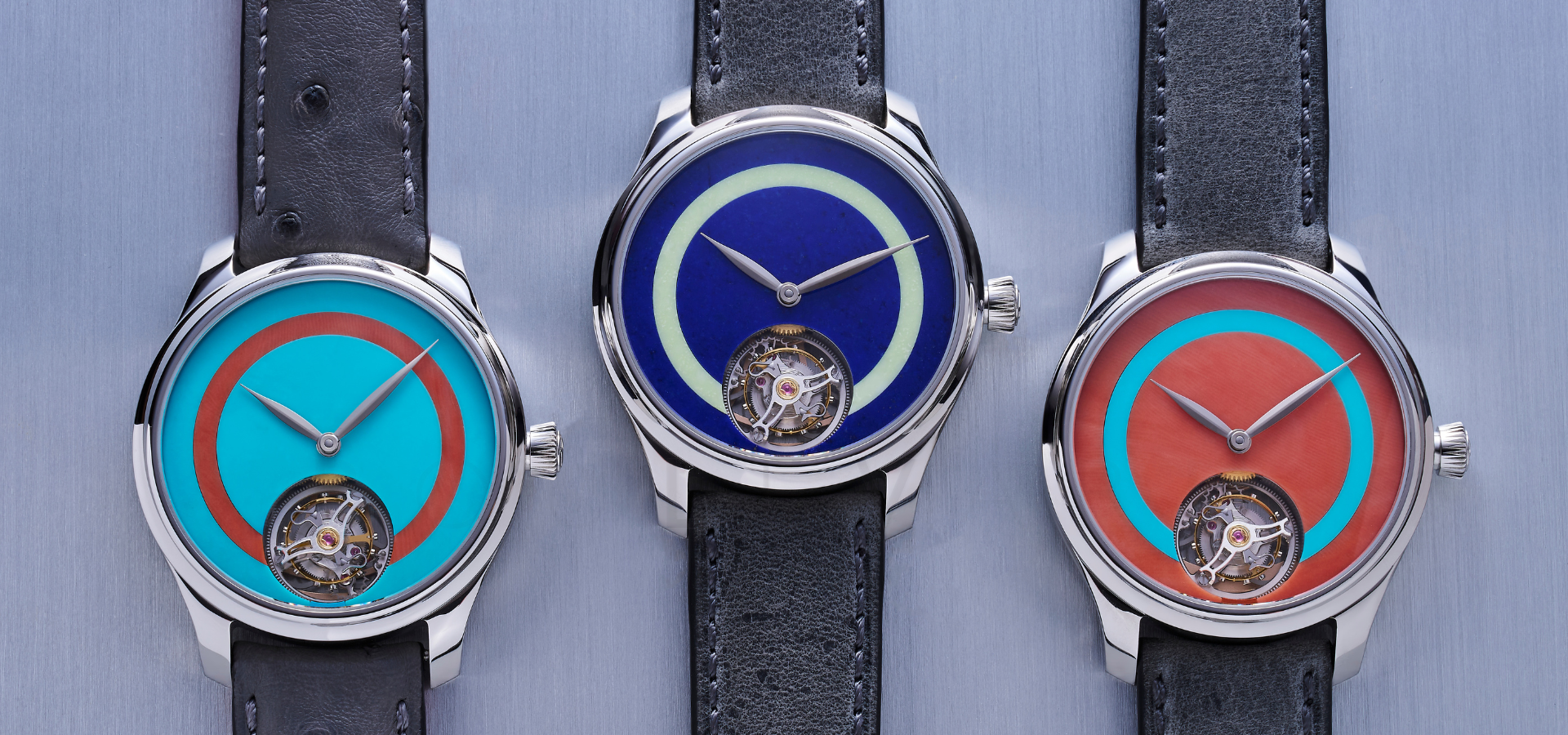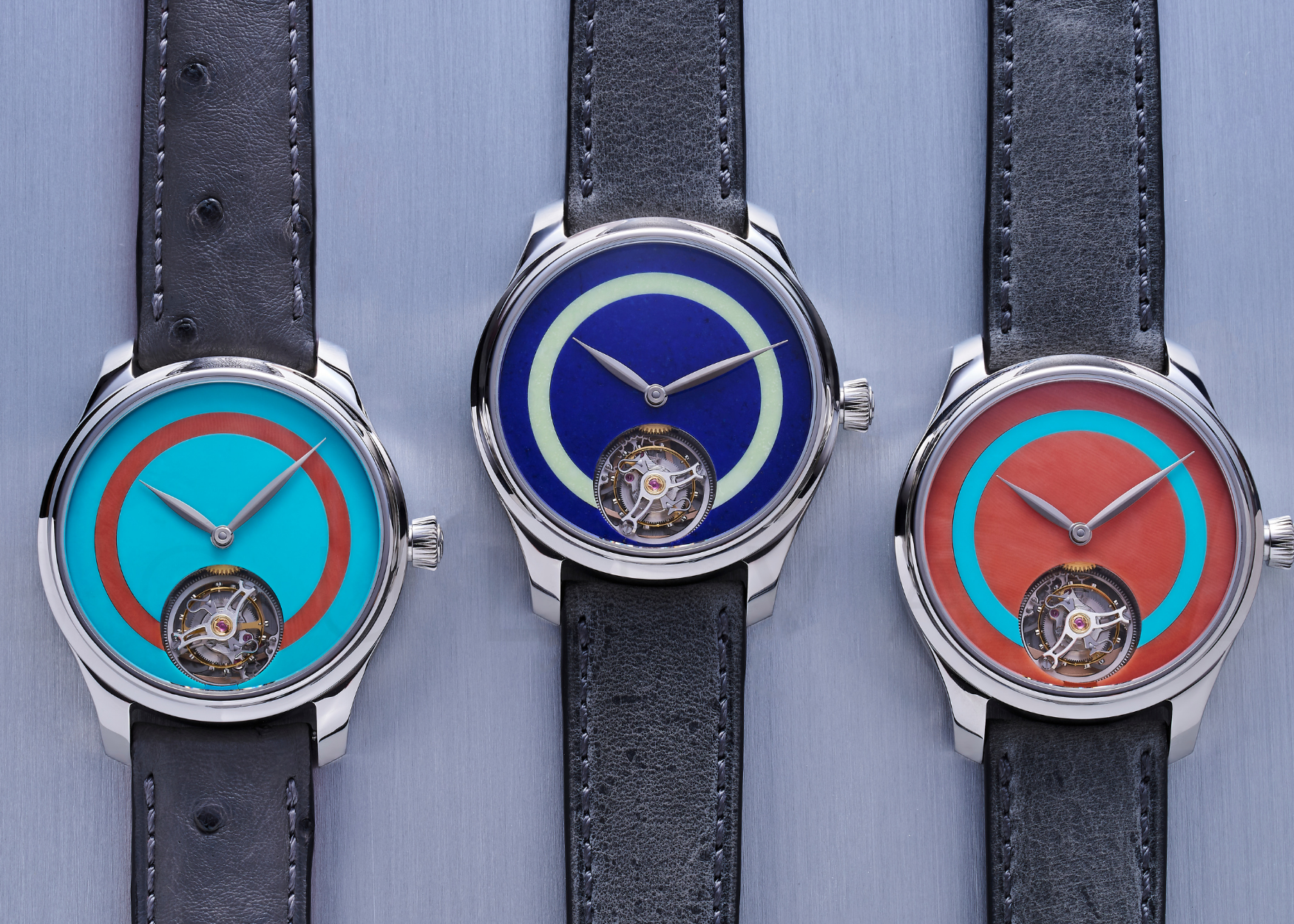Watches and Wonders 2025: The defining watch trends of the year
by Hamish McDougall
Photography by Kevin Khng
The 2025 edition of Watches and Wonders in Geneva brought together some of the most renowned watchmakers for a week of craftsmanship, creativity and technical achievement. Held at the Palexpo convention centre, the fair welcomed over 60 prestigious maisons, from heritage names to contemporary innovators—all unveiling their latest collections to an international audience.
From vivid dials and gem-set cases to groundbreaking movements and refined complications, brands such as Bovet, Chopard, Grand Seiko, Hermès, Bulgari and Vacheron Constantin presented timepieces that reflected both tradition and evolution. Boulevard had the privilege to explore the highlights and speak with the creative forces behind each maison’s newest expressions of horology.
Read the exclusive interviews and insights from Watches and Wonders
- The interview: Franck Muller’s Nicholas Rudaz reveals the stories behind the brand’s bold new novelties and takes us inside Watchland
- The interview: Grand Seiko’s Akio Naito on the brand’s journey from functional mastery to emotional storytelling
- The interview: Fabrizio Buonamassa Stigliani on Bulgari’s bold new novelties at Watches and Wonders 2025
- The interview: Bovet’s Pascal Raffy on the brand’s 2025 novelties and the evolution of functional complications
- The timepieces from Watches and Wonders Geneva 2025 push the boundaries with bold, vibrant designs and cutting-edge technology
- These watchmakers are redefining the way we traditionally read the time
Beyond the complications—which this year were rarely, themselves, the focus of a collection—many brands sought innovation, or new expressions, from a wider horological palette. Here, we present the five themes that defined the trendsetting timepieces of 2025.
A closer look at materials
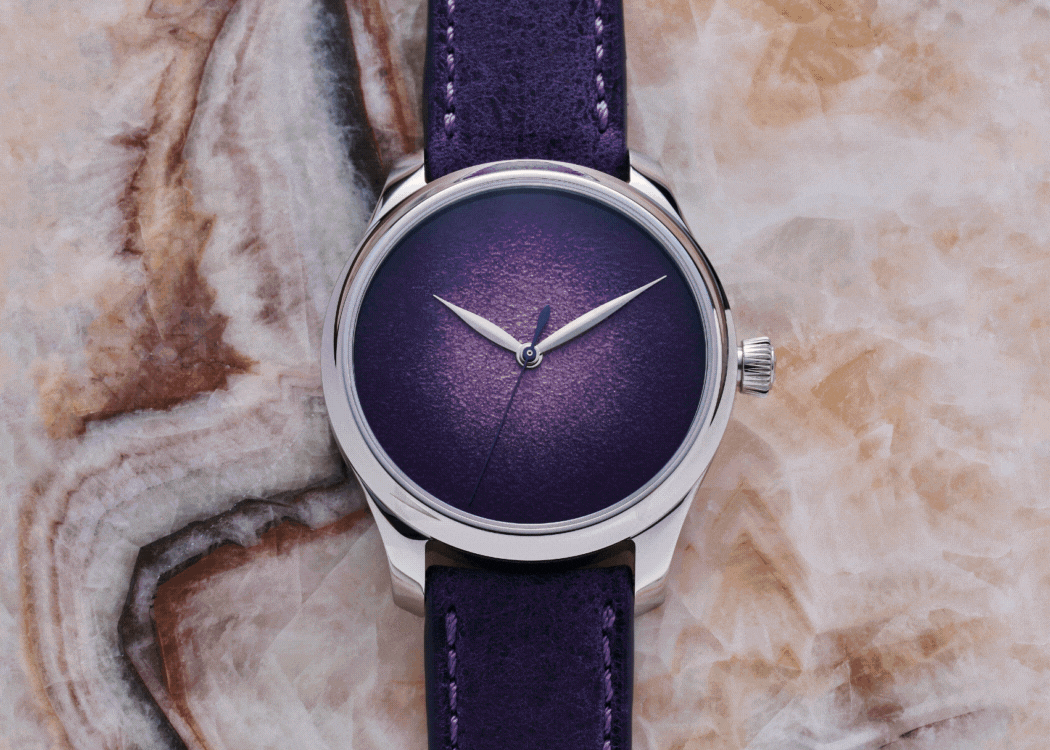
H.Moser & Cie Endeavor Pop Collection, Hublot Big Bang Unico Magic Ceramic, Chopard Alpine Eagle Flying Tourbillon, and Jaeger-LeCoultre Reverso Tribute Monoface Small Seconds.
One of the things that not only came up again and again, but invariably took our breath away, was materiality. Not just the use of materials to push design potential—witness Hublot’s mastery of ceramics to pioneer new colours (2025 featured ‘Petrol Blue’ and an unassuming ‘Mint Green’)—but also the execution of materiality, the texturing, the craft. Chopard’s Alpine Eagle Flying Tourbillon is largely unchanged from its 2022 debut, apart from the introduction of the ‘Rhône Blue’ dial inspired by the glacial river, however, it’s the texturing of the PVD-treated gold, and its effect of catching and playing with the light, that makes this such an endlessly attractive piece.
So too, is Jaeger-LeCoultre’s Reverso Tribute Monoface—again, not a novelty, but released for the first time with this stunning Milanese gold-mesh bracelet in pink gold, elevating the piece to a new level of dress watch elegance.
Leading this year’s field in brilliantly splashy and technically masterful materiality, was the ‘Endeavour Pop’ collection by H. Moser & Cie (top). Six gemstones—including the Burmese jade, pink opal, lapis lazuli and lemon chrysoprase—are presented in 18 combinations, complete with options for a tourbillon and minute repeater.
A matter of focus
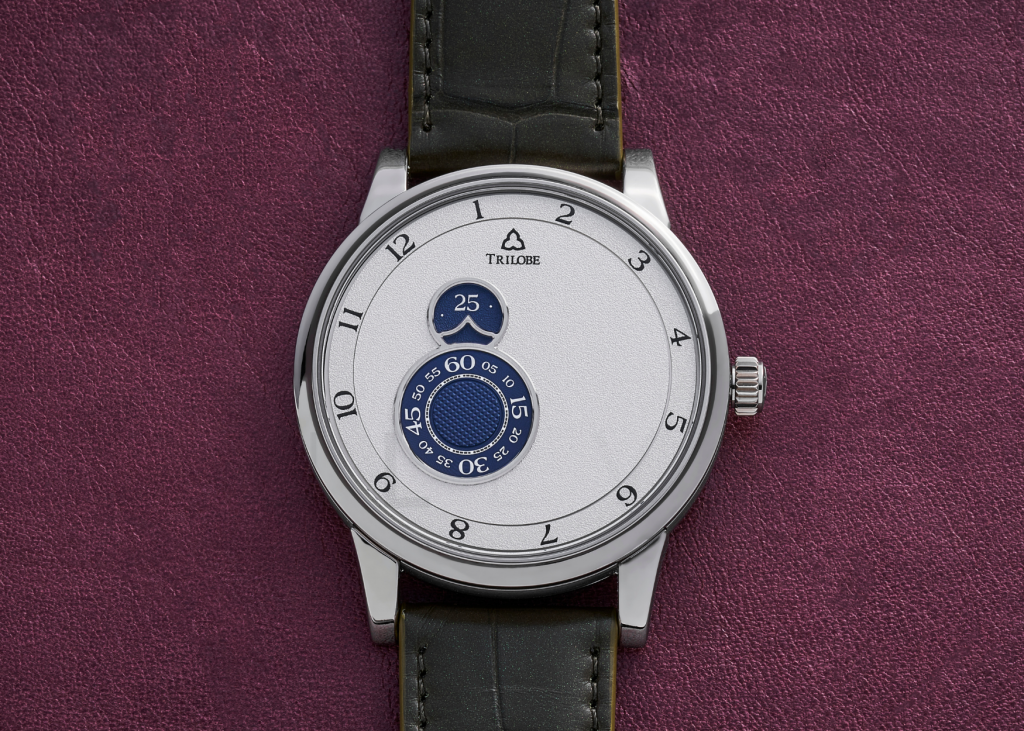
Trilobe Nuit Fantastique.
Unlike the Vacheron Constantin Solaria, recognised as the world’s most complicated watch with over 41 complications, many of this year’s most interesting pieces eschewed a multiplicity of complications in preference for singular focus—typically on a brazen and sensational concept.
We’re thinking particularly of Bovet’s Récital 30 World Timer, which takes the Récital 28 Prowess 1 (launched last year), and strips out the tourbillon and perpetual calendar in order to celebrate the daylight-savings complication—which now has the dial to itself.
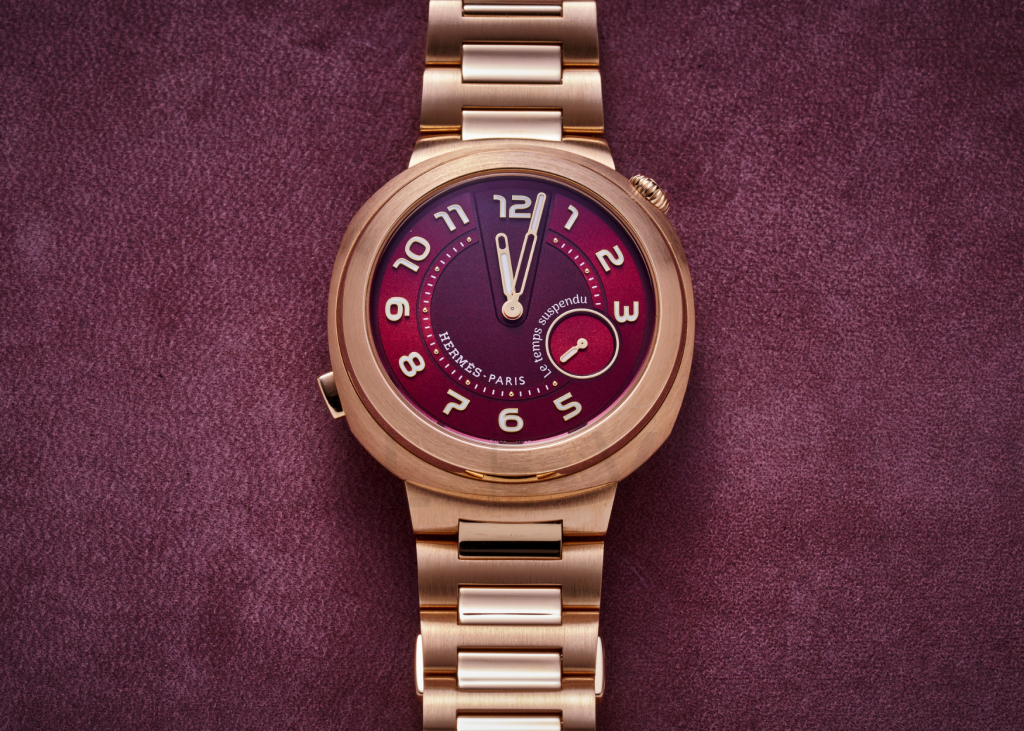
Hermès Cut Le Temps Suspendu.
The Cartier Tank à Guichets takes this a step further, and strips out everything, altogether, excepting the hour and the minute displayed in the fabulously quirky ‘guichets’, or windows (which are positioned variously around the dial in different iterations). And we simply had to include Singer’s Flytrack Barista SR106—which is essentially a chronograph re-purposed into a coffee timer—conceived by co-founder and caffeine addict, Marco Borraccino.
A vintage revival
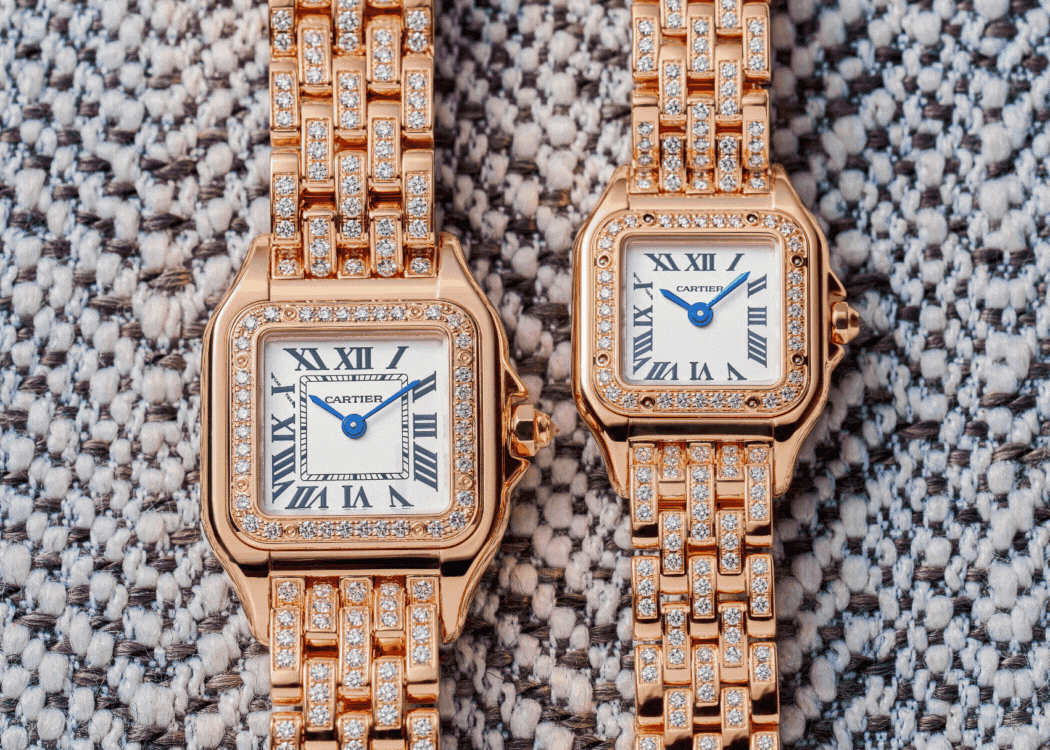
Panthère de Cartier, Piaget ‘Sixitie’ Swinging Sautoir, Singer Reimagined 1969 Chronograph, and Patek Philippe Calatrava.
Some things never go out of style, but this year, retro colours and even Sixties-inspired designs came out swinging—literally, in the case of Piaget’s Sautoir. Piaget’s entire collection, including both its jewellery watches and men’s pieces, drew on its archives from the late Sixties and Seventies to reconceptualise the Andy Warhol watches with gorgeous dials in tiger’s eye and a green-flecked blue opal, as well as a stunning Altiplano in Glowing Weave set with emeralds, diamonds, malachites and chrysoprases. And we just love the new Swinging Sautoir, which re-imagines the brand’s famous trapeze-shaped timepieces as a show-stopping piece of jewellery—or theatre?
Elsewhere, Patek Philippe updated its beloved Calatrava with an arresting salmon dial, perfectly paired with the platinum case and dark-chocolate alligator strap. It’s also a nod to focus—notable in the Calatrava, which is usually reserved for displays of technical prowess—and hearkens back to the classically styled OG Calatrava launched in 1932. And the latest Cartier Tressage—comprising twisted strands of bulbous yellow-gold almost consuming the elegant piano-black dial and matching leather strap—is straight out of an Eighties statement-jewellery power play.
A pop of colour
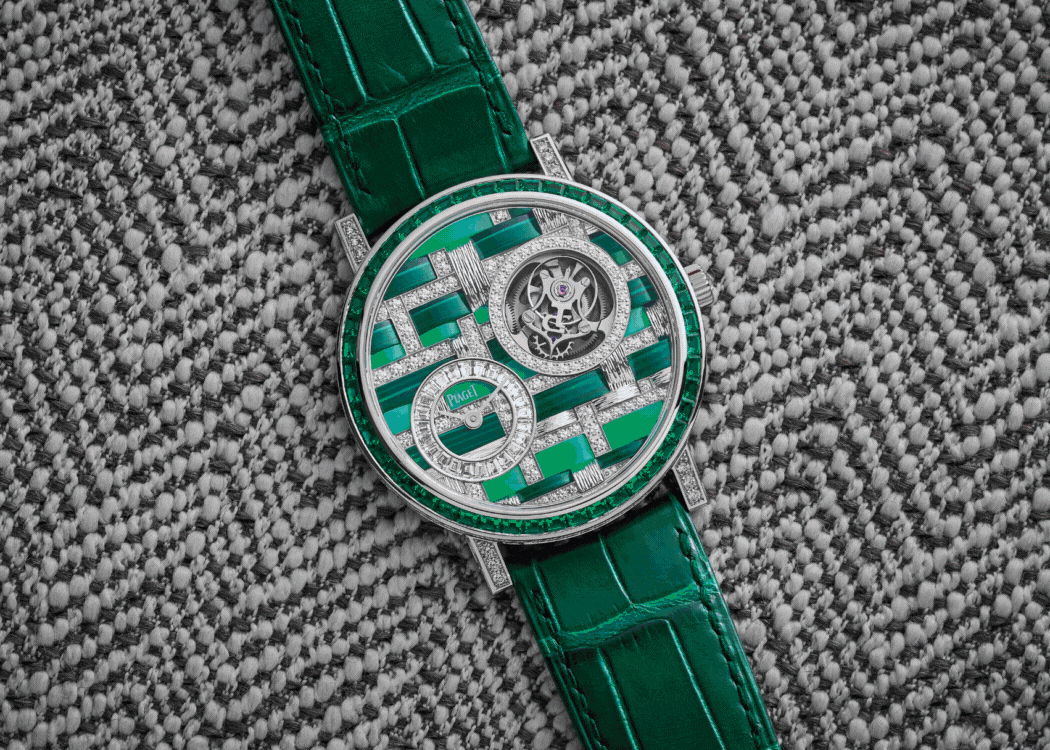
Piaget Altiplano Glowing Weave, IWC Schaffhausen Big Pilot’s Watch Shock Absorber XPL Toto Wolff, Hublot Big Bang 20th Anniversary Red Magic and Master of Sapphire, Franck Muller Vanguard Royal Bauxite, and Hautlence Linear Series 3.
Yes, watches have been wandering out across the colour wheel for some time now, in an ever-widening spectrum of ceramics, metallics, and of course, gemstones. But this year, the colour pop, itself, was the play, with vast resources of technical development being devoted to the creation of enhanced vibrancy, hitherto impossible patterning, or alluring new translucency.
Hublot, naturally, leaps to mind, with its release of the world’s first multi-coloured ceramic—the undoubted technical accomplishment of which appears to overshadow its (in our view) unappealing debut in black-and-blue frosted polka dots. Much lovelier was the new Master of Sapphire set of five pieces, complete with a celebratory boxset in honour of the 20th anniversary of the Big Bang.
Alongside its gemstone-led collection, H. Moser & Cie also released a radiant Endeavour Centre Seconds Concept in gradient purple enamel. And IWC Schaffhausen launched a limited-edition Big Pilot’s Watch Shock Absorber XPL as part of its F1 collab with Mercedes-AMG. Conceived with team principal Toto Wolff, and built to withstand 30,000G, this new edition showcases the shock-absorbing spring coated in Petronas green Super-LumiNova—paired with a matching green rubber strap. There’s also a more demure black strap option, for when you’re not quite feeling the teal.
A shift in scale
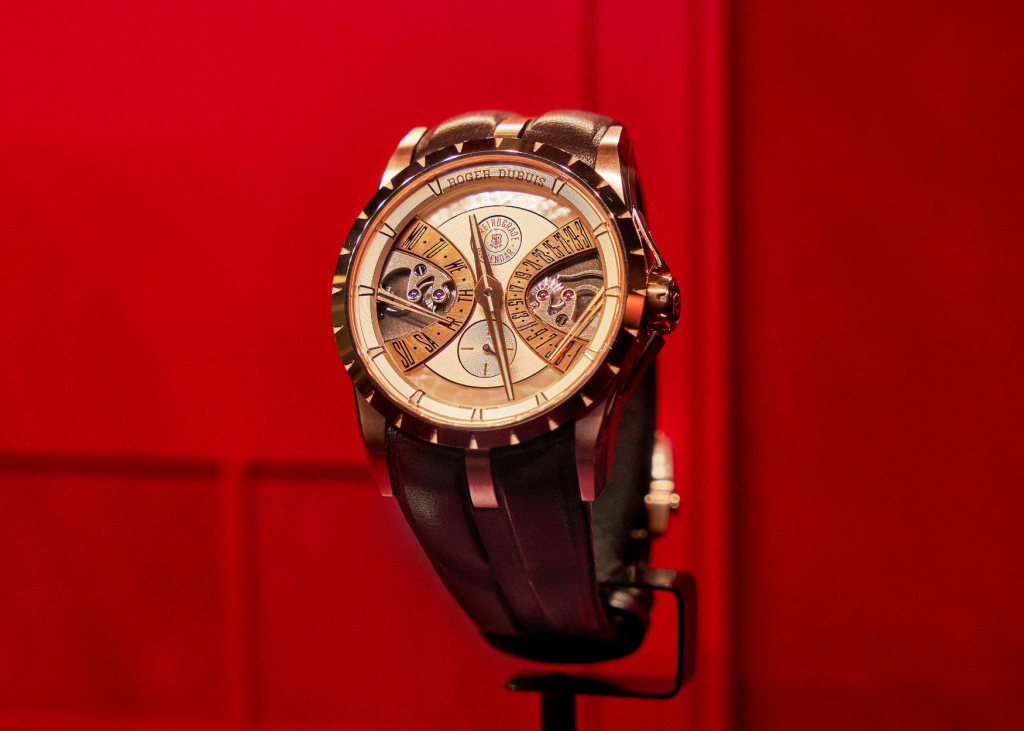
Roger Dubuis Excalibur Biretrograde Calendar.
Perhaps due to the diminished emphasis on manifold complications, or the increasing number of unisex watches (think the Grand Seiko Spring Drive UFA, at 37mm), or possibly just a nod to the more global withdrawal from conspicuous opulence, high horology certainly seems to be watching its weight.
Even houses known for their abandon are getting in on the action—most notably, Roger Dubuis, who debuted the remarkably pared back Excalibur Biretrograde Calendar. To be fair, at 40mm, it’s not exactly petite, but firstly, it’s the smallest watch in the marque’s current line-up, and secondly, it appears almost modest in the company of the Excalibur Grande Complication—also released at this year’s show, also architected around those signature biretrograde arcs, but weighing in at 45mm. Released as a celebration of the brand’s 30th anniversary, with a nod to the biretrograde’s starring role in its history (Dubuis himself co-patented the mechanism in 1989), the smaller of the new biretrogrades is, for us, the more successful of the two—impactful in its relative simplicity (belied, naturally, by the Poinçon de Genève certification), timeless in its design, with those gorgeous contrapuntal arcs in rose gold given free reign over the mother-of-pearl dial, and—moreover?—endlessly wearable.
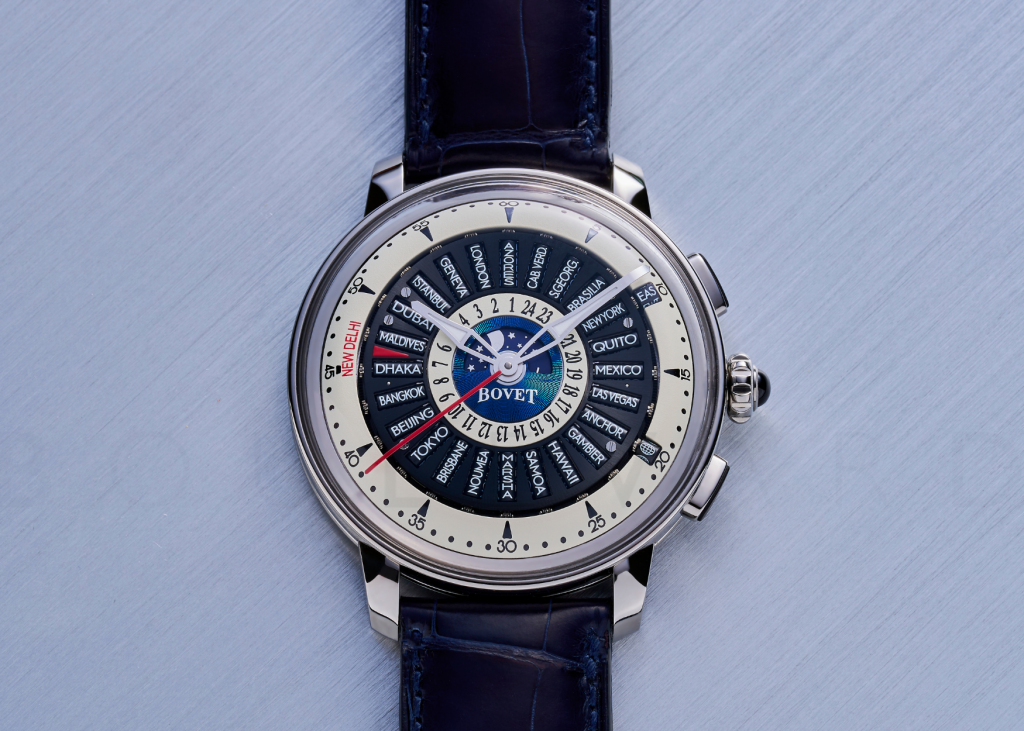
Bovet Récital 30 World Timer.
In a similar vein, Bovet’s Récital 30 presents a significant and welcome update on its predecessor, the Récital 28 Prowess 1. Again, it’s not diminutive, at 42mm across and 12.9mm thick. But the dial seems to taper away to an elegantly minimal bezel, and it’s certainly a whole lot less watch than the Récital 28, which clocks a grandiose diameter of 46.3mm, with a thickness of 17.85mm. And in many ways, that makes the Récital 30 (for us, at least), a whole lot more watch. Because, even setting the aesthetics aside, the timepiece’s founding conceit is the ease of traversing the globe’s impenetrable daylight-savings zones—and who among us doesn’t prefer travelling light?
Read next:
